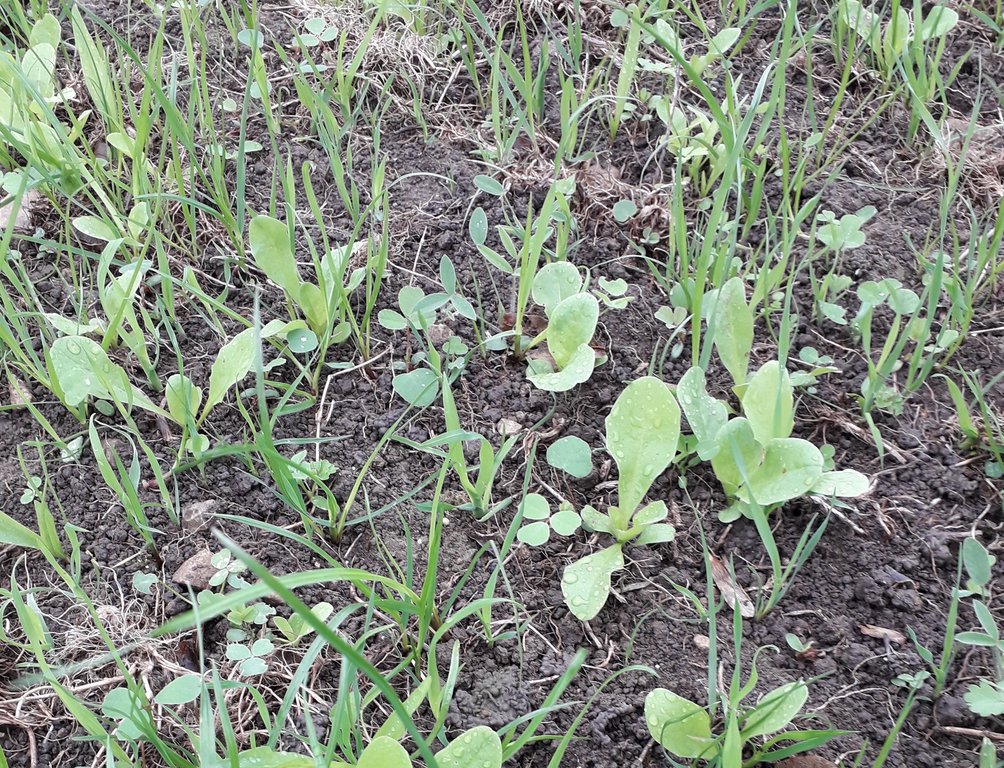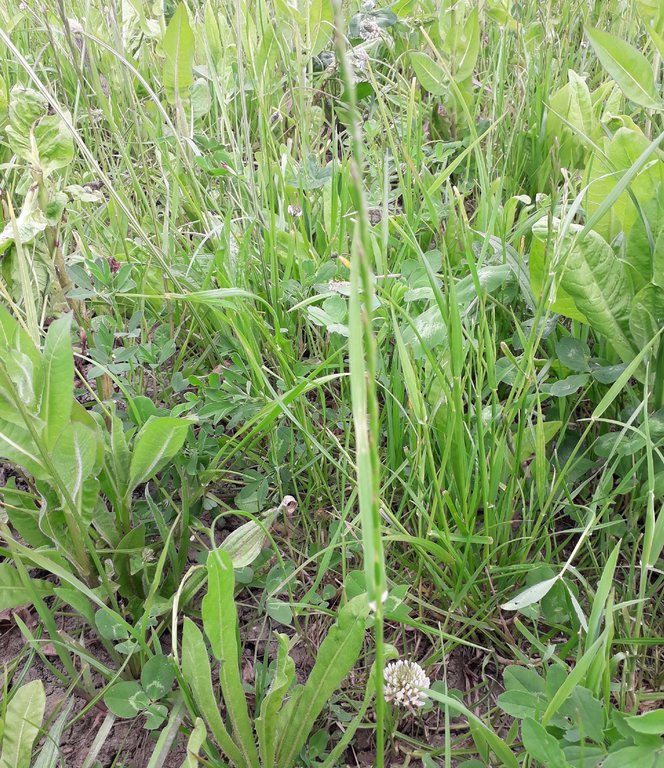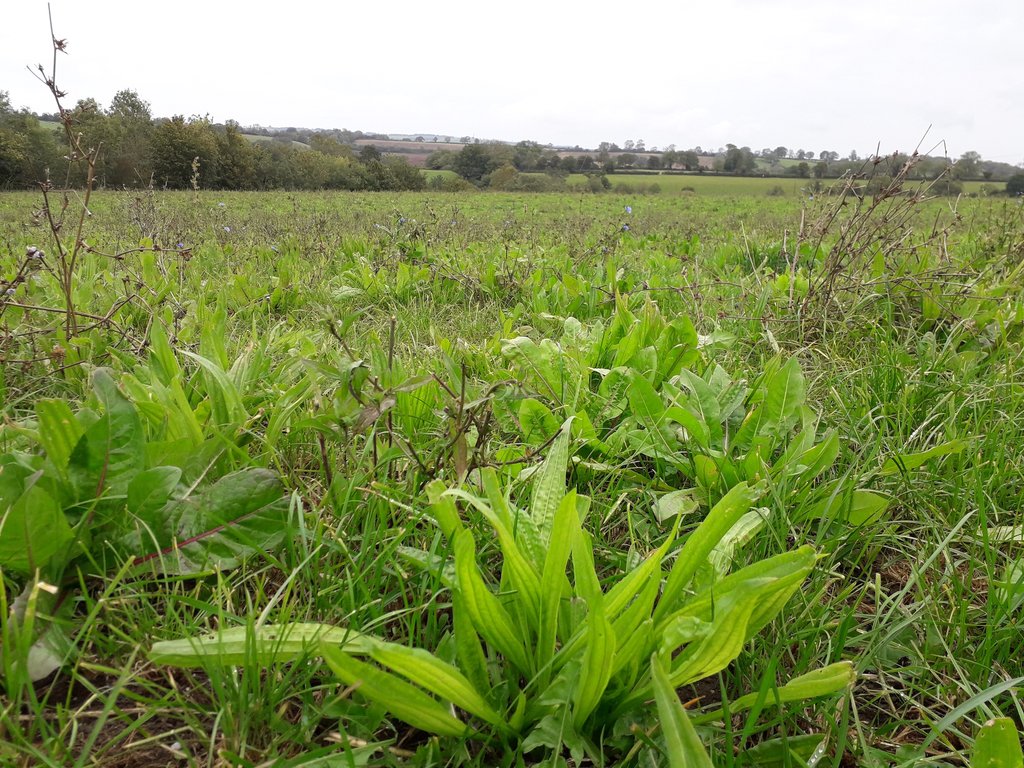Herbal leys in an organic dairy rotational grazing system [英国]
- 创建:
- 更新:
- 编制者: Alan Radbourne
- 编辑者: –
- 审查者: William Critchley, Rima Mekdaschi Studer
technologies_5982 - 英国
查看章节
全部展开 全部收起1. 一般信息
1.2 参与该技术评估和文件编制的资源人员和机构的联系方式
土地使用者:
Turner Stephen
Perridge Farm Partnership
英国
土地使用者:
Hutchings Nathan
Perridge Farm Partnership
英国
有助于对技术进行记录/评估的项目名称(如相关)
European Interreg project FABulous Farmers有助于对技术进行记录/评估的机构名称(如相关)
Soil Association (Soil Association) - 英国1.3 关于使用通过WOCAT记录的数据的条件
编制者和关键资源人员接受有关使用通过WOCAT记录数据的条件。:
是
1.4 所述技术的可持续性声明
这里所描述的技术在土地退化方面是否存在问题,导致无法被认为是一种可持续的土地管理技术?:
否
2. SLM技术的说明
2.1 技术简介
技术定义:
Use of diverse herbal leys in dairy production. Provides resilient forage that improves soil health and provides a habitat for biodiversity within a rotational grazing system
2.2 技术的详细说明
说明:
Perridge and Old Burford Farm is a 182 ha organic dairy and beef farm in Somerset. They established 43 ha of diverse herbal leys on their grazing platform between 2018 and spring 2021. There are a further 16 ha to be sown in autumn 2021 with further developments planned thereafter.
The system initially established a mix of chicory, plantain, ryegrass and clover in Autumn 2018, with further fields including a more complex mix of cocksfoot, Festulolium sp (a natural hybrid of ryegrass and fescue) , ryegrass, timothy, tall and meadow fescue, sainfoin; red, white, alsike and sweet clovers, sainfoin, lucerne, birdsfoot trefoil, burnet, chicory, ribgrass forage herb, yarrow and sheep’s parsley.
The most successful establishment has been from autumn sowing, following ryegrass, into a well prepared seed bed with shallow cultivation. This has led to three to four times more effective germination. To prepare the seed bed, a Cambridge roller was used to form a firm seed-bed and stop seeds going too deep, then seed was sown using a grass harrow and air seeder in August. Soil was rolled again with the Cambridge roller to break up clods of soil and then given a flat-roll to give tight soil-to-seed contact and to conserve moisture. The field is then left untouched until the following spring.
Once established by the following spring, the leys are grazed with 140 organic dairy cows, calves and beef animals. They are grazed using a strip rotation approach where they are moved daily at a target of 4,000kg dry matter (DM)/ha, and graze the herbage down to a residual of 1,800kg DM/ha (minimum residual of 10cm). The minimum full rotation is 35 days but this is often longer.
No artificial inputs are used with these diverse herbal leys, thus adhering to organic standards. The legumes (clover, lucerne, sainfoin and birdsfoot trefoil) are used to fix nitrogen, and with the grazing approach of “a third eaten, a third trampled and a third remaining as residual feed” soil organic matter is built up. In addition, the deep rooting species draw up minerals, improve soil structure and infiltration, and increase soil organic matter (SOM). Increasing SOM can also increase soil bacteria and microbe activity. Furthermore, managing the system with a rotational, cell grazing approach prevents selective grazing and increases species diversity and longevity of the sward.
Benefits:
Soil health – deep rooting species improve soil structure and infiltration, and through building up organic matter this improves soil carbon sequestration and leads to greater soil microbial activity and improved nutrient cycling. This is particularly important for this site due to mineral deficiency.
Resilient and persistent forage – deep rooting species bring up moisture from deep in the soil.
Mineral-rich forage – there is a high mineral content in ribwort plantain, chicory, sheep’s parsley, yarrow and burnet. Again, root structure helps, mining more minerals from deeper in the soil profile.
Biodiversity improvements - a wider species diversity of flowing plants is beneficial for biodiversity.
Animal health benefits – Anthelmintic properties of some species with a high tannin content, such as chicory, sainfoin and birdsfoot trefoil, reduce the parasitic worm burden. Also, the way livestock are grazed, with a good residual of forage, reduces soil contact and, therefore, worm risk
There are many positives to herbal leys and these have all been experienced to date, particularly resilient forage production in dry conditions. It currently is too early to see changes in soil structure and health.
The challenge with herbal leys are ensuring successful establishment and selecting the right seed mix. Establishment is reliant on conditions and preparations, with the lifespan of the ley managed through careful grazing by having long rotations and preventing selective grazing. Ensuring you have the correct mix of grasses, herbs and legumes to get the balance of energy and protein is key: there has been some anecdotal experience at this farm of cows not seeming “full” coming off herbal ley, this is thought due to dominance of chicory over grasses.
2.3 技术照片
2.5 已应用该技术的、本评估所涵盖的国家/地区/地点
国家:
英国
区域/州/省:
Somerset
有关地点的进一步说明:
Shepon Mallet
具体说明该技术的分布:
- 适用于特定场所/集中在较小区域
技术现场是否位于永久保护区?:
否
Map
×2.6 实施日期
注明实施年份:
2018
2.7 技术介绍
详细说明该技术是如何引入的:
- 通过土地使用者的创新
- 通过项目/外部干预
3. SLM技术的分类
3.1 该技术的主要目的
- 改良生产
- 减少、预防、恢复土地退化
- 保持/提高生物多样性
- 适应气候变化/极端天气及其影响
- 减缓气候变化及其影响
3.2 应用该技术的当前土地利用类型
同一土地单元内混合使用的土地::
否

牧场
集约放牧/饲料生产:
- 改良牧场
动物类型:
- 牛 - 奶制品
- 牛 - 非奶牛牛肉
是否实行作物与牲畜的综合管理?:
否
产品和服务:
- 肉类
- 奶类
品种:
cattle - dairy and beef (e.g. zebu)
计数:
140
3.3 由于技术的实施,土地使用是否发生了变化?
由于技术的实施,土地使用是否发生了变化?:
- 否(继续问题3.4)
3.4 供水
该技术所应用土地的供水:
- 雨养
3.5 该技术所属的SLM组
- 畜牧业和牧场管理
3.6 包含该技术的可持续土地管理措施

农艺措施
- A1:植被和土壤覆盖层

植物措施
- V2:草和多年生草本植物
3.7 该技术强调的主要土地退化类型

化学性土壤退化
- Cn:肥力下降和有机质含量下降(非侵蚀所致)

物理性土壤退化
- Pc:压实

生物性退化
- Bh:栖息地丧失
- Bs:质量和物种组成/多样性的下降
- Bl:土壤寿命损失
3.8 防止、减少或恢复土地退化
具体数量名该技术与土地退化有关的目标:
- 减少土地退化
4. 技术规范、实施活动、投入和成本
4.2 有关投入和成本计算的一般信息
具体说明成本和投入是如何计算的:
- 每个技术区域
注明尺寸和面积单位:
ha
如果使用本地面积单位,注明转换系数为1公顷(例如1公顷=2.47英亩):1公顷=:
1ha = 2.47 acres
其它/国家货币(具体说明):
GBP
如相关,注明美元与当地货币的汇率(例如1美元=79.9巴西雷亚尔):1美元=:
0.75
注明雇用劳工的每日平均工资成本:
150
4.3 技术建立活动
| 活动 | 时间(季度) | |
|---|---|---|
| 1. | Shallow cultivator x 4 passes | August |
| 2. | Cambridge Roller | August |
| 3. | Sow seed with grass harrow and air seeder | August |
| 4. | Cambridge Roller | August |
| 5. | Flat Roller | August |
| 6. | Cows let into graze | April |
4.4 技术建立所需要的费用和投入
| 对投入进行具体说明 | 单位 | 数量 | 单位成本 | 每项投入的总成本 | 土地使用者承担的成本% | |
|---|---|---|---|---|---|---|
| 设备 | Shallow cultivator (up to 4 passes) | Ha | 1.0 | 35.0 | 35.0 | 50.0 |
| 设备 | Cambridge Roller | Ha | 1.0 | 20.0 | 20.0 | 50.0 |
| 设备 | Grass harrow and air seeder | Ha | 1.0 | 31.0 | 31.0 | 50.0 |
| 设备 | Flat roller | Ha | 1.0 | 26.0 | 26.0 | 50.0 |
| 植物材料 | Herbal ley seed mix | Ha | 1.0 | 218.0 | 218.0 | 50.0 |
| 技术建立所需总成本 | 330.0 | |||||
| 技术建立总成本,美元 | 440.0 | |||||
如果土地使用者负担的费用少于100%,请注明由谁负担其余费用:
Supporting projects such as Fabulous Farmers
注释:
Contract charge provided so includes labour costs. Cost shown represents the cost per ha. This case study applied on 43 ha.
4.5 维护/经常性活动
| 活动 | 时间/频率 | |
|---|---|---|
| 1. | Rotational Strip Grazing | 1 day in >35 days April to November |
4.6 维护/经常性活动所需要的费用和投入(每年)
注释:
Maintenance through cattle grazing each year for the remaining life of the ley.
4.7 影响成本的最重要因素
描述影响成本的最决定性因素:
Seed cost, success of establishment. If establishment fails or is patchy then reseeding or over seeding will be required.
Additionally longevity of sward is an important factor in cost – how many years will the sward last before reseeding is required. Aim minimum 4 -5, but can be up to 9 years
5. 自然和人文环境
5.1 气候
年降雨量
- < 250毫米
- 251-500毫米
- 501-750毫米
- 751-1,000毫米
- 1,001-1,500毫米
- 1,501-2,000毫米
- 2,001-3,000毫米
- 3,001-4,000毫米
- > 4,000毫米
指定年平均降雨量(若已知),单位为mm:
1300.00
农业气候带
- 半湿润
- 半干旱
5.2 地形
平均坡度:
- 水平(0-2%)
- 缓降(3-5%)
- 平缓(6-10%)
- 滚坡(11-15%)
- 崎岖(16-30%)
- 陡峭(31-60%)
- 非常陡峭(>60%)
地形:
- 高原/平原
- 山脊
- 山坡
- 山地斜坡
- 麓坡
- 谷底
垂直分布带:
- 0-100 m a.s.l.
- 101-500 m a.s.l.
- 501-1,000 m a.s.l.
- 1,001-1,500 m a.s.l.
- 1,501-2,000 m a.s.l.
- 2,001-2,500 m a.s.l.
- 2,501-3,000 m a.s.l.
- 3,001-4,000 m a.s.l.
- > 4,000 m a.s.l.
5.3 土壤
平均土层深度:
- 非常浅(0-20厘米)
- 浅(21-50厘米)
- 中等深度(51-80厘米)
- 深(81-120厘米)
- 非常深(> 120厘米)
土壤质地(表土):
- 中粒(壤土、粉土)
- 细粒/重质(粘土)
土壤质地(地表以下> 20厘米):
- 中粒(壤土、粉土)
- 细粒/重质(粘土)
表土有机质:
- 高(>3%)
5.4 水资源可用性和质量
地下水位表:
< 5米
地表水的可用性:
中等
水质(未处理):
不良饮用水(需要处理)
水质请参考::
地表水
水的盐度有问题吗?:
否
该区域正在发生洪水吗?:
否
5.5 生物多样性
物种多样性:
- 中等
栖息地多样性:
- 中等
5.6 应用该技术的土地使用者的特征
定栖或游牧:
- 定栖的
生产系统的市场定位:
- 商业/市场
非农收入:
- 低于全部收入的10%
相对财富水平:
- 平均水平
个人或集体:
- 个人/家庭
机械化水平:
- 机械化/电动
性别:
- 女人
- 男人
土地使用者的年龄:
- 中年人
5.7 应用该技术的土地使用者使用的平均土地面积
- < 0.5 公顷
- 0.5-1 公顷
- 1-2 公顷
- 2-5公顷
- 5-15公顷
- 15-50公顷
- 50-100公顷
- 100-500公顷
- 500-1,000公顷
- 1,000-10,000公顷
- > 10,000公顷
这被认为是小规模、中规模还是大规模的(参照当地实际情况)?:
- 中等规模的
5.8 土地所有权、土地使用权和水使用权
土地所有权:
- 个人,未命名
土地使用权:
- 个人
用水权:
- 个人
土地使用权是否基于传统的法律制度?:
否
5.9 进入服务和基础设施的通道
健康:
- 贫瘠
- 适度的
- 好
教育:
- 贫瘠
- 适度的
- 好
技术援助:
- 贫瘠
- 适度的
- 好
就业(例如非农):
- 贫瘠
- 适度的
- 好
市场:
- 贫瘠
- 适度的
- 好
能源:
- 贫瘠
- 适度的
- 好
道路和交通:
- 贫瘠
- 适度的
- 好
饮用水和卫生设施:
- 贫瘠
- 适度的
- 好
金融服务:
- 贫瘠
- 适度的
- 好
6. 影响和结论性说明
6.1 该技术的现场影响
社会经济效应
生产
饲料生产
注释/具体说明:
Good quality and diversity of fodder for grazing cattle. Similar production to grass ley achieved.
饲料质量
注释/具体说明:
Good quality and diversity of fodder for grazing cattle
畜牧生产
注释/具体说明:
Cattle remained healthy and well fed on herbal ley
生产故障风险
注释/具体说明:
More resilient and diverse forage
产品多样性
注释/具体说明:
Up to 16 species have been sown as a very diverse seed mix
社会文化影响
SLM/土地退化知识
注释/具体说明:
Training and SLM expert support has transferred knowledge to land users
生态影响
土壤
土壤水分
注释/具体说明:
Deeper rooting and broader leaves have helped maintain soil moisture
土壤压实
注释/具体说明:
No heavy machinery used after sowing in August through to grazing in May.
养分循环/补给
注释/具体说明:
Deep rooting varieties can recharge nurtients from depth, while nitrogen fixers can support nutrient cycling
生物多样性:植被、动物
植物多样性
注释/具体说明:
Up to 16 species have been sown as a very diverse seed mix
有益物种
注释/具体说明:
Plant diversity has attracted a greater abundance of beneficial species
减少气候和灾害风险
干旱影响
注释/具体说明:
Deeper rooting and broader leaves have helped maintain soil moisture and recycle from deeper soil water
6.2 该技术的场外影响已经显现
缓冲/过滤能力
6.3 技术对渐变气候以及与气候相关的极端情况/灾害的暴露和敏感性(土地使用者认为的极端情况/灾害)
渐变气候
渐变气候
| 季节 | 增加或减少 | 该技术是如何应对的? | |
|---|---|---|---|
| 年温度 | 增加 | 好 | |
| 季雨量 | 夏季 | 减少 | 好 |
6.4 成本效益分析
技术收益与技术建立成本相比如何(从土地使用者的角度看)?
短期回报:
稍微积极
长期回报:
积极
技术收益与技术维护成本/经常性成本相比如何(从土地使用者的角度看)?
短期回报:
中性/平衡
长期回报:
中性/平衡
6.5 技术采用
- 单例/实验
在所有采用这项技术的人当中,有多少人是自发的,即未获得任何物质奖励/付款?:
- 0-10%
6.6 适应
最近是否对该技术进行了修改以适应不断变化的条件?:
否
6.7 该技术的优点/长处/机会
| 土地使用者眼中的长处/优势/机会 |
|---|
| Improving soil heath and structure, building soil organic matter and improving mineral balance |
| Resilient forage crop that can cope with longer periods of low rainfall |
| Nutritious, high mineral content forage that has additional anthelmintic benefits |
| 编制者或其他关键资源人员认为的长处/优势/机会 |
|---|
| Diverse herbal leys have multiple benefits to soil, also perform well in periods of low rainfall – more evidence of soil benefits is required regarding structure and biological cycling |
| Delivers for biodiversity - through providing flowering plants for pollinators and allowing diverse plants like chicory to go to seed provides important feed for birds |
| More research is required on health impact and production in relation to dairy. Research by Reading University has demonstrated no significant different in growth rate for steers |
6.8 技术的弱点/缺点/风险及其克服方法
| 土地使用者认为的弱点/缺点/风险 | 如何克服它们? |
|---|---|
| Cost and challenge of establishment due to frequent dry springs | Careful timing and flexibility |
| Maintaining species diversity and sward longevity | Rotational grazing and long rotations, allowing plants to seed on a rotational basis |
| 编制者或其他关键资源人员认为的弱点/缺点/风险 | 如何克服它们? |
|---|---|
| Have realistic expectations of what plants will thrive on different soil types and select bespoke mixes accordingly | Improved knowledge and support |
| In many cases having to establish a seed bed through ploughing – linked to longevity of sward, want to minimise cultivations and re seeding to reduce soil damage and cost | Improved knowledge and support |
7. 参考和链接
7.1 信息的方法/来源
- 实地考察、实地调查
1
- 与土地使用者的访谈
1
(现场)数据是什么时候汇编的?:
30/09/2020
链接和模块
全部展开 全部收起链接
无链接
模块
无模块






